
by Bo Svensén*
Organisation of work
Once the statutes of the Nobel Foundation had been ratified in June 1900, the Swedish Academy immediately set to work on the preparations required to enable the award of the first Nobel Prize in 1901. A Nobel Committee consisting of five members of the Academy was established in October 1900. The task of the Committee was to submit its report before the end of September every year and to propose the choice of Laureate to the Academy. The Academy’s permanent secretary, the writer Carl David af Wirsén, was appointed to preside over this Committee.
The Academy also founded a Nobel Institute, to which a number of experts on literature in various languages were affiliated: one for the Slavic languages, one for French and Spanish, one for English and Dutch, one for Portuguese, one for German and the Scandinavian languages and one for Italian. The task of the experts was to assist the Academy with individual appraisals of the candidates proposed.
Naturally a library was also required by the Academy for its work on the Literature prize. This was established and called The Nobel Library of the Swedish Academy. It was primarily intended to assist the Nobel Institute by providing the kind of literature required for work on the prize, but if possible its collections were to be made available to others as well. It was to acquire mainly works of modern literature as well as works on literary history, linguistics, history and philosophy and reference works of various kinds. In addition the library was to subscribe to a wide range of literary journals.
The Nobel committee through five decades
Wirsén presided over the Nobel Committee until his death in 1912. He was succeeded by the historian Harald Hjärne, who was to occupy the post for almost a decade.
When Hjärne died in 1922, the writer Per Hallström became chairman, a post he occupied for a total of 24 years. His contribution to the work of the Committee was considerable. In addition to the annual task of composing the Committee’s report, he wrote a large number of his own expert appraisals on the candidates proposed for the prize. Of the 800 appraisals that exist from the period 1901–1950, a good 300 were written by Per Hallström.
When Hallström stepped down as Chairman of the Nobel Committee in 1946, he was succeeded by someone who had a great deal of experience of its doings. The writer Anders Österling had already been an active member of the Committee for a quarter of a century, and he now began an incumbency that was to last for the next quarter of a century. However, most of this period falls outside the scope of this survey.
The experts
The most important group among the experts were of course those affiliated to the Nobel Institute, but others were engaged as well. One important group in this context were the Academicians themselves.
During the period, the combined linguistic skills of the Nobel Institute and the Academy only embraced the major European language areas on the whole. Where other languages were concerned, therefore, either an attempt had to be made to form some opinion of the candidate’s work from translations – with all the disadvantages this involved – or recourse made to some external expert. There were candidates who wrote in non-European languages such as Arabic, Persian or Chinese but they were rare.
One European language that at times gave rise to serious problems for the Academy was modern Greek, especially as the two Greek writers of main concern came close to being awarded the prize: Kostis Palamas and Angelos Sikelianos. During the period 1926–40, the former was nominated on a total of 14 occasions.
The Nobel year
The timetable for the Nobel Year looked more or less the same for the entire 50-year period under review. However, these routines differed in essential respects from those that apply today.
The Committee’s first meeting of the year took place at the end of January or beginning of February, when the proposals that had been submitted were reviewed. A list of the approved nominations was compiled and distributed to the other members of the Academy.
Then it was the turn of the experts, whose task was to write appraisals of the candidates.
In the late spring or early summer the Nobel Committee met again, this time for preliminary discussion of the award of the prize.
The Committee met again at the beginning of the autumn to continue its deliberations. It also had to make a decision on the draft report on the candidates that had been drawn up in the intervening period by the chairman. When the Committee had approved this report it was submitted to the Academy.
The Academy then began its deliberations and reached its decision on the award of the prize some time in November. During the early years this decision was not announced immediately but remained secret until Nobel Day on December 10th.
Entitlement to nominate
During this period the work of the Swedish Academy with the Nobel Prize was governed by special regulations on the award of the literature prize. One of the most important of these concerned entitlement to nominate candidates: “the right to nominate a candidate for the prize-competition shall belong to Members of the Swedish Academy and of the Academies in France and Spain, which are similar to it in constitution and purpose; members also of the humanistic classes of other academies and those humanistic institutions and societies that are on the same footing as academies; and teachers of aesthetics, literature and history at university colleges.” (Official translation, 1901).
The replacement of this wording in 1949 by the following implied relatively significant changes: “The right to nominate candidates for the prize shall be enjoyed by members of the Swedish Academy and of other academies, institutions and societies similar to it in membership and aims, by professors of the history of literature or of languages at universities and university colleges, by previous winners of the Nobel Prize for Literature, and by presidents of authors’ organizations which are representative of the literary activities of their respective countries.” (Official translation). Subsequently a number of minor amendments have been made.
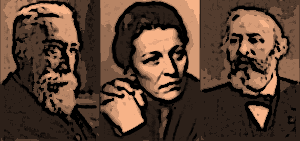
Written nominations
The written nominations, which occupy a fairly large proportion of the Swedish Academy’s Nobel Archives, vary greatly in character.
In most cases a nomination consists of one single letter advocating one candidate and is signed by one or two individuals.
Sometimes a larger group of members of a qualified institution, typically an academy, have signed a joint nomination. The most famous of these, and one which also achieved the desired effect, was submitted as early as 1901, when a large number of the members of the French Academy jointly endorsed the name of Sully Prudhomme. Three decades later a similar attempt was made by 27 members of the Spanish Academy in favour of Ramón Menéndez Pidal, but without achieving the same success as the French Academy.
There have also been occasions when large groups of members of various authors’ associations and literary societies have submitted written nominations in support of specific candidates. During the early years two British organisations were very active in this respect – the Incorporated Society of Authors and the Royal Society of Literature. The former established a special committee for this purpose, which in 1902 submitted 49 written proposals nominating Herbert Spencer.
In terms of extent, the most overwhelming campaign of them all was probably the one mounted in 1932 in support of Upton Sinclair’s candidature. In the lists of nominations it is described as “about 800 proposals from every country of the world, collected by a committee and submitted through its secretary”.
One fundamental rule is that no individuals may nominate themselves for the Nobel Prize, and no such proposals are considered by the Committee. As a curiosity, however, mention may be made of a nomination submitted in 1905 by a professor of literature in New Zealand called J.M. Brown proposing a writer named G. Sweven, who was said to be the author of a utopian novel entitled Limanora, the Island of Progress. This proposal was considered in the normal way, but in hindsight it must be regarded as a covert self-nomination. It turns out (if you search using the name “Sweven” on the Internet) that ‘Godfrey Sweven’ was in fact the pseudonym used by the John Macmillan Brown who submitted the nomination.
Lists of nominations
The lists of approved nominations tell us a great deal. For instance they reveal that during this period the Committee was required to assess a total of 1,256 proposals. The distribution over the five decades is relatively even, and for the period 1901–1930 remarkably even:
| Period | Number of Nominations |
| 1901–1910 | 223 |
| 1911–1920 | 221 |
| 1921–1930 | 240 |
| 1931–1940 | 301 |
| 1941–1950 | 271 |
On the other hand, if these figures are considered year by year, it turns out that there were variations. A relatively large number of nominations were submitted to begin with but they declined during the First World War. When the war ended the numbers rose slowly to reach their peak at the end of the 1930s. During the Second World War there was the same decline as during the First World War, but from 1947 onwards an increase can be seen, this time more rapid than its precursor.
The nature of the lists of nominations changes to some extent during the years. To begin with the Nobel Committee not only listed the name of the nominee but also the work or works cited in the nomination. After only a few years, however, this practice was relinquished and soon it became normal merely to list the name of the nominee.
Similarly, there was initially greater readiness than later to list all the individuals who endorsed a certain nomination – provided they were not unreasonably numerous. In 1901, for instance, the 17 members of the French Academy supporting the nomination of Sully Prudhomme are listed. When the campaigns became more extensive, the Committee was quite simply constrained to eschew lists of this kind, for example in 1929 when the poet Arno Holz was proposed by “412 professors and other teachers at universities and colleges in Germany, Austria, Switzerland etc. These proposals were submitted via the Faculty of Arts at the University of Königsberg”.
The nominators
Nominations were submitted by a wide variety of individuals. Among their names we find a predominance of professors, either those with chairs at central Europe’s prestigious universities or teaching at unknown provincial universities in the far-flung corners of the world. Many of the professors were at the same time members of academies and learned societies of various kinds. Some of these associations are well-known and time-honoured, others virtually unheard of.
Among the nominators we sometimes find very famous names, for instance previous Laureates, and a not insignificant number of nominations come from members of the awarding body itself, the Swedish Academy.
About twenty previous Laureates were involved in nominating candidates during the period in question. Among those who submitted proposals we find, for instance, Maurice Maeterlinck and Romain Rolland. The second of these was responsible for a nomination that led to a great deal of discussion – for Sigmund Freud (1936). Nominations from previous Laureates also included Gerhart Hauptmann‘s proposal of Thomas Mann in 1924 and from Thomas Mann, who in his turn proposed Hermann Hesse as early as 1931.
The most industrious of the previous Laureates when it came to submitting nominations was at the same time a member of the Swedish Academy, Verner von Heidenstam, whose nominations included three future Laureates: Carl Spitteler, Henri Bergson and Frans Eemil Sillanpää. Nominations came from several other members of the Academy as well as Heidenstam and all in all during the period 1901–1950 they submitted about 300.
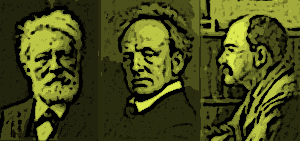
The candidates
Like those who nominated them, the candidates proposed varied extensively. Household names alternate with totally unknown individuals, esoteric poets with the authors of best-sellers, literary stylists with plain-spoken writers of non-fiction, youthful talents with writers whose oeuvre is complete. The distribution between men and women is what could be expected of the period, but women are not remarkably under-represented. What can be determined, however, is that nominations were rarely submitted for writers outside the western cultural sphere. Sven Hedin’s nominations of Chinese and Japanese writers are among the exceptions.
Some proposals were submitted numerous times. The most interesting of these were perhaps those that finally resulted in the award of the prize. The record is held by Johannes V. Jensen, who was nominated 18 times before the Academy could overcome its misgivings about some elements of his work in 1944. Grazia Deledda was another Laureate whose advocates required tenacity: when she was awarded the prize for 1926 she had already been proposed 12 times. Third place is shared by Carl Spitteler (1919) and Anatole France (1921), nominated 9 times.
The records also disclose in which year candidates awarded the prize after 1950 were nominated for the first time. They reveal that most of the Laureates in the 1950s had not had too long a wait:
| First Nominated | Year of Award | |
| Pär Lagerkvist | 1947 | 1951 |
| François Mauriac | 1946 | 1952 |
| Winston Churchill | 1946 | 1953 |
| Ernest Hemingway | 1947 | 1954 |
| Halldór Kiljan Laxness | 1948 | 1955 |
| Albert Camus | 1949 | 1957 |
| Boris Pasternak | 1946 | 1958 |
On the other hand nominations were already being submitted in the 1940s for three individuals who would have to wait until the 1960s before being awarded the prize. Two of them were nominated for the first time in 1947: Mikhail Sholokhov (Laureate in 1965) and Shmuel Josef Agnon (Laureate in 1966). The third was the 1962 Laureate John Steinbeck, nominated for the first time as early as in 1943.
It is often said that a candidate is not normally awarded the prize when first nominated. But during the period 1901–1950 this was not at all unusual and actually occurred on ten occasions. It is perhaps not very surprising that this was frequent in the early years, but nevertheless it is still a remarkably large number: Sully Prudhomme 1901 (obviously), Theodor Mommsen 1902, Rudolf Eucken 1908, Paul Heyse 1910 and Rabindranath Tagore 1913. Then we have to wait until the 1930s, when Sinclair Lewis (1930), Luigi Pirandello (1934) and Pearl Buck (1938) were awarded the prize during the year in which they were first nominated. The two remaining occasions both occurred in 1950 when William Faulkner was awarded the previous year’s prize and Bertrand Russell for the current year.
There are also instances of candidates not being awarded the prize despite the great tenacity of their advocates. The record here is held by the Catalonian writer Angel Guimerà y Jorge, who was nominated every year from 1907 until 1923, in other words 17 times. In addition to him, mention can be made of Paul Valéry, who was nominated 12 times between 1930 and 1945, but who died just when it seemed that the Academy was about to award him the prize.
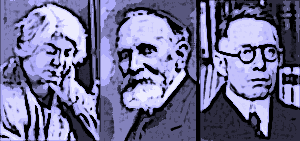
Expert appraisals
When the list of candidates has been determined, the experts begin their work. As has been pointed out, there are about 800 expert appraisals from the period 1901–1950. If this number is related to the number of nominations submitted (1,256), it can be seen that the Nobel Committee requested expert appraisals for about two-thirds of all the candidates proposed.
Expert appraisals can vary in length, from thirty or forty pages to a mere one or two. The difference depends partly on what the appraisal deals with: the entire oeuvre of a candidate proposed for the first time or the latest work of one who has already been considered.
The number of appraisals per candidate varies a great deal. The record is held – as for the number of nominations – by the 1944 Laureate Johannes V. Jensen, who was the subject of no fewer than 18 expert appraisals.
The Nobel committee’s reports
The committee’s routines
On the basis of the expert appraisals submitted and – in many cases – his own reading and opinions, the Chairman of the Nobel Committee spends the summer drafting a report on the authors included in the list of nominations to be submitted to the Academy. Ideally this report will conclude with a recommendation that the Committee has elected to endorse. This may be unanimous or reflect the support of a majority of its members. If no majority can be attained, as a rule the Committee’s recommendation is to reserve the prize for the following year.
Naturally the routines adopted for the Nobel award have undergone some degree of development during this 50-year period. The factors that have played a role derive on the one hand from external circumstances, such as the prevailing situation, the standing of the Academy or the status of the Nobel Prize, and on the other from the working methods and opinions of those involved in the work of the Nobel Committee and the Nobel Institute; this applies above all to the Chairman of the Committee. These developments are reflected to some extent in the form and content of the reports.
The form and content of the reports
As an example, it can be noted that Wirsén, even though he can fall back on the expert appraisals, fairly often deals in greater depth with one or several candidates, particularly those he would like to advocate. For instance, he devotes a considerable number of pages to Mistral in 1904, Sienkiewicz in 1905, Carducci in 1906, Swinburne in 1908, Verhaeren in 1909 and Maeterlinck in 1909 and 1911.
Hjärne’s reports partly reflect his own expertise and areas of interest as a historian. He devotes a great deal of space to the Danish cultural historian Frederik Troels-Lund in 1916 and to Benito Pérez Galdós’ extensive oeuvre on historical subjects in 1915, but he also presents a comprehensive account of his standpoint concerning literary authors such as Romain Rolland (1915), Henrik Pontoppidan (1917) and Karl Gjellerup (1917).
Sometimes Hjärne also touches on issues of principle relating to the literature prize, partly because of the impact of world events. The most striking is the detailed discussion found at the beginning of the 1914 report. Several of the foremost spokesmen for the sciences, scholarship and arts on both sides – indeed several of the Laureates, in particular Maeterlinck and Hauptmann, Eucken and Kipling – have clashed and attacked each other acrimoniously, which has raised the question of what was going to happen to international cultural relationships at the end of the war. Therefore, in Hjärne’s opinion, in awarding the prize the Academy should endeavour to mitigate the abuses and excesses that result from “nationalistic tendencies in contemporary literature and the struggle for power in general” and in its award of the prize avoid appearing to favour any particular nation. Instead it should assert “the transcendence of literature over the political unrest of the period” and function as “the international arbitrator of scholarship […] refusing to allow its serenity to be disturbed by contact with profane concerns”.
When in 1922 Per Hallström began his long tenure of the chairmanship of the Committee, the character of the reports changes. They are now shorter than they were and as there is no shortage of nominations, at least during the 1930s, this means that most of the candidates are dealt with relatively concisely. The most important exceptions can be found in some of the earliest reports: in 1922 when the two main candidates Jacinto Benavente and William Butler Yeats are weighed against each other, in 1924 and 1926 when the focus is on George Bernard Shaw and in 1927 when the candidature of Kostis Palmas is dealt with. In addition, mention can be made of a relatively comprehensive treatment of the oeuvre of the Spanish writer Miguel de Unamuno in the 1935 report.
The concise treatment of the award proposals also means that the reports become more uniform. One example will be cited here to illustrate this, it refers to a candidate nominated for the first time:
No. 4. René Béhaine. The expert appraisal provides a detailed analysis of Histoire d’une société, a cycle of novels that seems to be the writer’s only, and as yet uncompleted, work and this analysis leads to a definite rejection of the nomination. The Committee members have through their own perusal of more or less extensive sections of these works reached the same verdict. [1937]
The wording quoted above is relatively courteous. This is the normal tone but at times the Committee can express itself considerably more bluntly:
No. 28. Lion Feuchtwanger. The worldwide reputation gained so rapidly by the historical novels of this German writer has not been found in the expert appraisal to correspond to any genuine literary value. This can probably be explained by the current taste for brutal effects and the inability of the general public to discriminate between the authentic and the spurious, or rather its predilection for crude deceit. The Committee’s members definitely recommend rejection of this proposal. [1930]
When Anders Österling assumed the chairmanship of the Nobel Committee its routines were altered to some extent, and this is reflected in the form taken by its reports. From 1947, these reports conclude with the presentation of the specific opinions of the members of the Committee in which they “each deal with the proposals that above all have aroused interest and seem pertinent”. After presenting these points of view, the chairman ends the report with his summary of the overall opinion of the Committee.
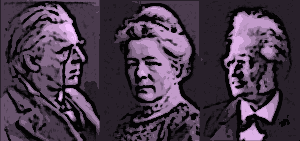 |
Nobel’s will and the statutes of the Nobel Foundation
The prescript in Nobel’s will that the literature prize is to be awarded to the writer who has produced “the most distinguished work of an ideal tendency” is echoed in reports produced throughout the period and appears in various guises:
“more than most represents what the testator called “the ideal” in literature” [on Sully Prudhomme, 1901]
“cannot however be considered to embody the noble idealism that should characterise those awarded the Nobel Prize in literature” [on Anatole France, 1910]
“one cannot deny him the idealism required of a winner of the Nobel Prize” [on H.G. Wells, 1921]
“that he lacks to an unusual extent, hitherto at least, the idealistic tendencies continually invoked in this context” [on Alberto Moravia, 1949]
Equally often the reports refer to issues relating to the statutes of the Nobel Foundation. In 1902, when a decision had to be made on candidates like Herbert Spencer and Theodor Mommsen, there was already discussion of the interpretation of Article 2 of the Statutes, which stipulates that the prize can also be awarded “to other writings which may claim to possess literary value by reason of their form or their mode of exposition”. Subsequently this issue was mainly discussed in relation to works of history and philosophy but it could also involve literary history and religion. One consistent feature is the extreme unwillingness to extend the scope of the Committee’s judgements. Among other candidates prevented by similar arguments from being awarded the prize can be mentioned the historian Guglielmo Ferrero, the literary critic Ramon Menéndez Pidal, James Frazer, who wrote on the anthropology of religion, and the philosophers Sarvepalli Radhakrishnan and Benedetto Croce.
The Committee determined, especially towards the end of this period, that the statutes do not forbid the Academy to award the prize posthumously provided that the candidate had been nominated as prescribed. This was the justification offered for the posthumous award to Erik Axel Karlfeldt in 1931. On one occasion a decision had to be made on no fewer than three such cases, in 1945 when Franz Werfel, Johan Huizinga and Paul Valéry had all died during the year. After 1931, however, the Committee consistently refrained from recommending the Academy to award the prize posthumously. (According to the current regulations the prize may only be awarded posthumously if the decision has been made prior to the prizewinner’s death.)
Dividing the prize?
It would be reasonable to presume that the idea of dividing the prize has been discussed more frequently than the decisions suggest. One or two cases have even come to light earlier, for instance when a proposal to divide the prize between the Norwegians Ibsen and Bjørnson was discussed in 1902 and the suggestion made in 1905 that Sienkiewicz should share the prize with another Polish writer, Eliza Orzeszkowa. But as time passed such proposals were made less frequently. In his 1948 report, Anders Österling refers, en passant, to the possibility of the prize being shared by T.S. Eliot and Angelos Sikelianos but rejects it immediately “as where both are concerned it would certainly be considered a disparagement”.
Members of the academy among those nominated
One particular problem is of course posed by the candidates who are at the same time members of the Academy. In virtually every case it appears that they have declined nomination and a routine has been established which means that they are not subjected to the appraisal of either an expert or the Committee. Instead the whole assessment process is referred to the Academy in its entirety and therefore is not open to our scrutiny.
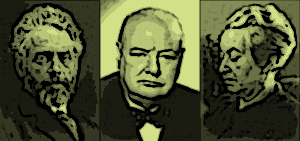
National and political considerations
In spite of Nobel’s express injunction against national considerations, these cannot at times be avoided. During the early years in particular, there was great concern to avoid awards that might give the impression that any particular country was favoured. After Sully Prudhomme had been awarded the prize in 1901, there was reluctance to award it to Frédéric Mistral in the following year. And the award to Mistral in 1904 spoiled in its turn the chances of Albert Sorel in 1905 and Gaston Boissier in 1906. Similarly the award to André Gide in 1947 posed an obstacle to the candidature of Georges Duhamel in the following year.
Sometimes writers are nominated for the Nobel Prize on more or less nationalistic grounds and in some quarters veritable campaigns are launched for a national literary hero. In 1905 there is already mention of “impugnment of the Academy in Italian newspapers from somewhat obscure sources” as a result of the award of the previous year’s prize to Frédéric Mistral and José Echegaray and not to Giosuè Carducci. Spanish support for the candidature of Jacinto Benavente in 1921 was also described by the Committee in terms that enable us to discern that the secrecy required of those submitting nominations was not always observed so scrupulously.
In the reports it is repeatedly observed that the Academy’s decision on the award of the prize should be made with no consideration of political factors, a principle, however, that cannot always be maintained. This issue became most acute in connection with the two world wars. In the 1914 report Hjärne comments, as has already been observed, on the virulent feuds with nationalistic overtones conducted during the war between writers on both sides. In the following year he goes into this subject in more detail and writers he identifies in particular are Henri Bergson, Émile Faguet, Paul Bourget and Émile Verhaeren.
In an individual opinion submitted in September 1939 it is pointed out with reference to Hermann Hesse that he became a Swiss citizen long before the Nazis assumed power in Germany and therefore not for political reasons, so that awarding him the prize should not be received badly in Germany. On the other hand, the Committee rejected Winston Churchill’s candidature in 1948 on the grounds that the prize “would acquire a political rather than literary import. A gesture of this kind could easily, in the light of Sweden’s justly or unjustly criticised stance during the Second World War, be misconstrued.”
In the advocacy for Hesse he is characterised as “a dignified and sympathetically unconventional representative of hard-pressed but tenacious humanism”. Comments of this kind on the contemporary world are not unusual in the Nobel Committee’s reports and this applies not only to current political circumstances but also the general zeitgeist and prevailing literary tastes.
Specific works or an entire oeuvre?
The lack of good candidates was a problem that became obvious mainly during the 1920s. One recourse discussed at that time in the Nobel Committee was to emphasise one precept in the statutes of the Nobel Foundation stipulating that the prize was to be awarded to “works” and not to an entire oeuvre, which it was hoped would make it possible to avoid taking responsibility for the inferior works of an uneven writer. This is what happened for example in 1924 when it was decided to disregard the rest of Wladyslaw Reymont’s works and he was explicitly awarded the prize for the novel The Peasants. But because subsequently it was decided more or less consistently not to award the prize for any single work, sometimes there are fears that the Academy will be considered to have based its decision on the weaker aspects of the Laureate’s oeuvre as well. Considerations of this kind posed obstacles to the candidatures of Arnold Bennett, for example, in 1926, Maxim Gorky in 1928 and John Masefield in 1935.
Nobel’s wording in his will that the prize was to be awarded to a work published during the “preceding year” was formulated less stringently in the statutes but this does not mean that the age of the work for which the award is made is always unproblematic. One well-known example is the 1929 award to Thomas Mann, when the Academy created a sensation by referring in its motivation not to the relatively recent The Magic Mountain but to a work of his youth, Buddenbrooks, published as early as 1901.
Reward or support?
What is the Nobel Prize in literature intended to do? Should the prize be a reward for a finished performance or should it provide support and encouragement? This is a question that arises in the Committee at times during the end of this period. In 1932 one member asserts in an individual appraisal that awarding the prize to John Galsworthy, a “popular and world-famous celebrity whose approachable cycle of novels has been read and appreciated everywhere”, will not have “the slightest significance either for him or for literature”; on the other hand should the Academy award the prize to Paul Ernst it will be rewarding “a writer with a distinctive, independent personality who stands aloof from the din of the marketplace”. Fifteen years later the Committee’s reluctance to endorse Ernest Hemingway’s candidature was based in part on the feeling that it had not been able to “discount the thought that in this case the prize would be an arid gesture as the amount involved is undoubtedly insignificant when measured against the standards of American success”.
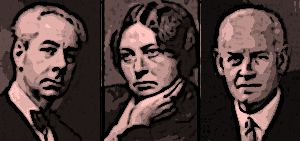 |
The award decisions
Normally the Nobel Committee’s reports concluded with a recommendation to the Academy, endorsed either by the entire Committee or a majority of its members. On a few occasions the Committee has been so divided that no majority has been attained for any of the candidates.
To what extent did the Academy follow the recommendations of its Nobel Committee? While Wirsén was chairman, on the whole the Academy adopted its proposals. The exceptions were 1904 when the Committee recommended Mistral on his own but in the end he shared the prize with Echegaray, 1908 when the Committee recommended Swinburne but the prize was awarded instead to Rudolf Eucken, the philosopher, and 1909, when after a great deal of bitter contention in the Committee and in the Academy the prize was finally awarded to Selma Lagerlöf.
During the following decade, which coincides on the whole with Hjärne’s incumbency as chairman, there was less consistency. In 1914, 1915, 1918 and 1919 the prize was reserved until the following year, and two of the prizes, for 1914 and 1918, were never awarded but reinvested. On the whole the recommendations of the Committee failed to find favour with the Academy during this period. In 1913 the French literary scholar Émile Faguet had been proposed for the prize, but the Academy preferred the newly discovered up-and-coming writer Rabindranath Tagore. The 1915 prize was not awarded to the Committee’s candidate Benito Pérez Galdós but to Romain Rolland nor in 1916 to its two Danish recommendations, Karl Gjellerup and Jakob Knudsen, but to Heidenstam, a Swede.
From 1920 onwards there is greater agreement between the Nobel Committee and the Academy. Disregarding 1921, when the Committee proposed Galsworthy but the Academy preferred Anatole France, the Committee’s proposals became the Academy’s decisions up until 1928. In that year the Academy admittedly awarded the prize to the Norwegian writer recommended by the Committee, Sigrid Undset, but the prize reserved in 1927 went to Henri Bergson and not to the candidate who after Undset had received the Committee’s strongest support, Maxim Gorky.
The 1930s are characterised by a relatively pronounced lack of correspondence between the proposals of the Nobel Committee and the Academy’s decisions. The awards to John Galsworthy in 1932 and Luigi Pirandello in 1934 are in actual fact the only two which followed the recommendation of the Committee. It can be seen, for instance, that a majority of the Committee advocated the Flemish writer Stijn Streuvels for two years in succession, but in 1937 he had to give way to Roger Martin du Gard and in 1938 to a new discovery, Pearl Buck.
After the award to Sillanpää in 1939, the Nobel Awards were cancelled entirely for the first few years of the war. However, the work of the Nobel Committee continued as before and in 1940 and 1942 it proposed Gabriela Mistral, who was finally awarded the prize when her name was suggested for the third time in 1945. However, the award of the prize in the previous year to Johannes V. Jensen had already re-established congruity between recommendation and decision and for the rest of the decade the Academy demonstrated its willingness to follow the proposals of the Nobel Committee even when it became increasingly bold and submitted previously almost unthinkable names such as Hermann Hesse, André Gide and T.S. Eliot.
This article was translated from Swedish to English by David Jones.
Kjell Espmark: The Nobel Prize in Literature. A Study of the Criteria behind the Choices. Boston, Mass. 1991: G. K. Hall & Co. 211 pp.
Sture Allén & Kjell Espmark: The Nobel Prize in Literature. An Introduction. Stockholm 2001: Swedish Academy. 58 pp.
Nobelpriset i litteratur. Nomineringar och utlåtanden 1901–1950. [‘The Nobel Prize in Literature. Nominations and the Nobel Committee’s Reports 1901–1950.’] Ed. Bo Svensén. I: 1901–1920. xliii + 489 pp. II: 1921–1950. 529 pp. Stockholm 2001: Swedish Academy.
* Bo Svensén, born 1941 in Stockholm. Studied Latin, Greek and French at Stockholm University. Licentiate’s degree (Latin) 1967. Doctor of Philosophy honoris causa, Stockholm University, 1998. Editor of university textbooks at various publishing houses 1967–76. Editor, Esselte Studium Dictionary Dept. 1976–78, managing editor 1978–83. Terminologist, Swedish Centre for Technical Terminology 1983–88. Private secretary to the Permanent Secretary, Swedish Academy, since 1988. Publications on theoretical lexicography and on the Swedish Academy; co-author of several dictionaries.
First published 29 December 2004